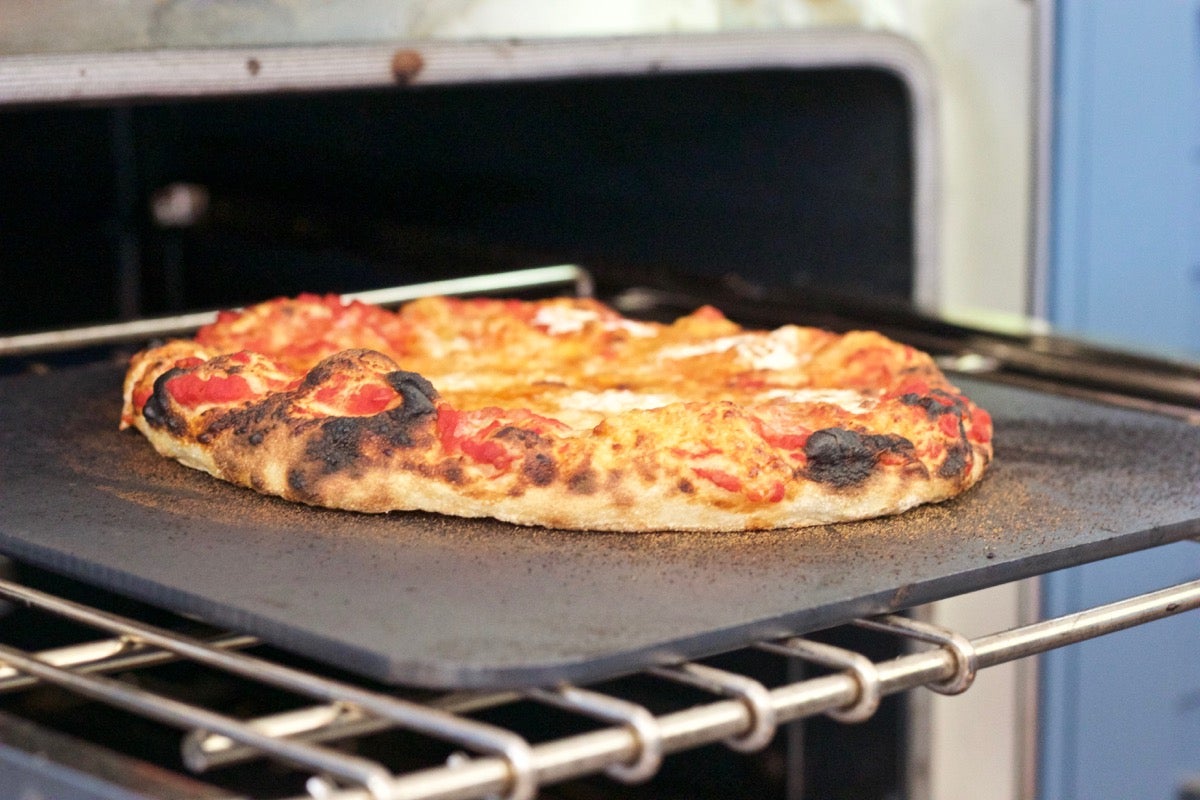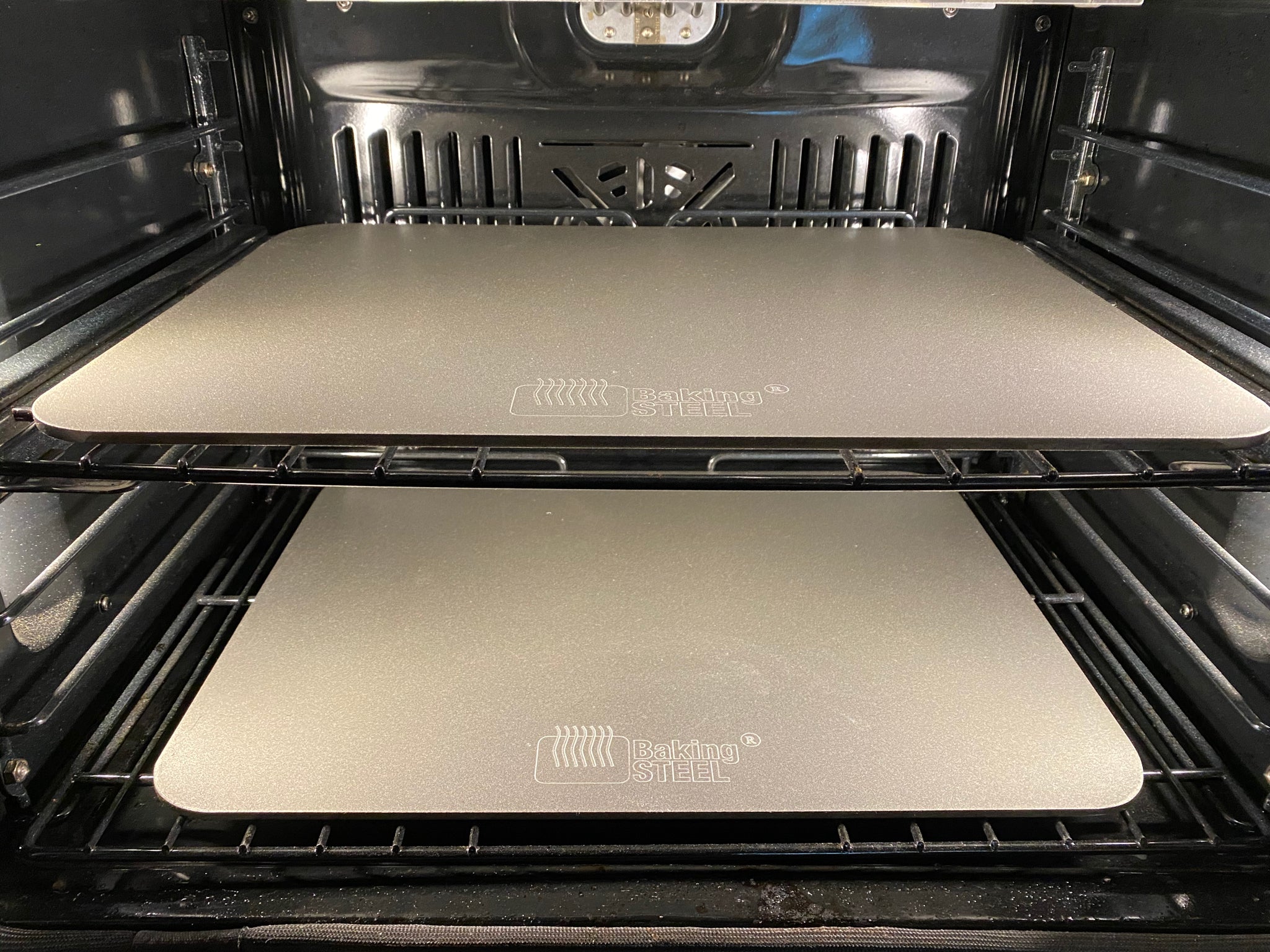Baking Steel - Your Guide To Better Baking
Have you ever wondered what makes that perfect crust on your homemade pizza or a truly lovely loaf of bread? It turns out, a lot of home cooks are discovering a secret tool that helps get those results, and it's called a baking steel. This isn't just a fancy kitchen gadget; it's a piece of equipment that can genuinely change how your baked goods turn out, especially when it comes to getting that delightful crispness we all enjoy. We are talking about something that helps your oven perform at its very best for certain kinds of foods, giving you a much better experience in your kitchen, so to speak.
People often find that their regular baking sheets just don't quite cut it for certain recipes, particularly those that need a very hot surface right away. A baking steel, in some respects, provides that intense, consistent heat that a traditional pizza oven might offer. It's a heavy, flat piece of metal that sits in your oven, getting incredibly hot and then transferring that heat directly to whatever you are cooking. This quick burst of warmth is what helps create that wonderfully bubbly, slightly charred crust on a pizza or a beautifully golden base on your bread, you know?
This simple item, which might seem like just a thick piece of metal, actually holds a lot of thermal energy, making it a very useful addition for anyone serious about their home baking. Whether you're aiming for a restaurant-quality pizza or a rustic loaf of sourdough with a perfect crust, a baking steel could very well be the missing piece in your baking setup. It's all about how it manages and shares warmth, which, as a matter of fact, makes a real difference.
Table of Contents
- What Makes a Great Baking Steel?
- The Materials of Baking Steel
- How Does Baking Steel Work in Your Oven?
- Getting the Most from Your Baking Steel
- Why is Mass Important for Baking Steel?
- The Role of Weight in Your Baking Steel
- Can You Bake Bread with a Baking Steel?
- Baking Steel for Sourdough and Beyond
What Makes a Great Baking Steel?
When you are thinking about getting a baking steel, one of the first things that comes up is what it's made from. Typically, these items are crafted from a few specific kinds of metal, most commonly A36 steel or a type of stainless steel. Each of these materials has its own set of characteristics that make it suitable for holding and giving off heat, which is, you know, the whole point of using one of these.
The Materials of Baking Steel
A36 is a kind of metal that isn't stainless. It's a very common material, often put to use for things that hold up buildings or other structures. But, it's also a really popular choice for the flat cooking surfaces you see in many restaurants, like those big griddles where they cook pancakes or burgers. This kind of metal, as a matter of fact, heats up well and holds onto that warmth, which is exactly what you want for a baking steel. It's a straightforward, hardworking material that does a good job of getting hot and staying hot, allowing for that direct warmth transfer that's so important for baking.
Now, when it comes to stainless steel, that's a different story. Stainless steel, as its name suggests, is designed to resist rust and stains, which can be a nice feature for kitchen items. Both A36 and stainless steel have their own advantages for a baking steel, and the choice often comes down to what you are looking for in terms of care and how the material holds warmth. Some people prefer the simple, raw performance of A36, while others might lean towards stainless for its ease of cleaning and long-term appearance, you know, just a little.
How Does Baking Steel Work in Your Oven?
Using a baking steel means understanding how it interacts with your oven's warmth. It's not just about placing a piece of metal in there; it's about how that metal gets hot and then shares that warmth with your food. For instance, I use one that's about 3/8 inch thick, which is nearly 9.5 millimeters, and it's a circle about 16 inches, or 40.6 centimeters, across for my gas oven. My oven, as a matter of fact, is a full-size one, meaning it can fit a whole sheet pan, so there's plenty of room around the steel for air to move, which is pretty important.
Getting the Most from Your Baking Steel
In a way, the steel should only get as hot as your oven is set to. However, when you use the broiler, things change quite a bit. The broiler gets much, much hotter than the main oven setting. This extra warmth from the broiler can really help the steel get to a super high temperature, which is exactly what you want for a really crispy pizza crust. So, if you're aiming for that professional-level crispness, turning on the broiler for a bit while the steel preheats can make a real difference, too it's almost.
To get the best results, you need to think about how thick your pizza is. A thicker pizza might need a slightly different approach than a thinner one because the warmth needs to get all the way through it. If you're using a baking steel, you typically preheat it for a good 30 minutes on the top rack of your oven, often with the broiler on. This can get the steel to reach temperatures around 620 degrees Fahrenheit, which is, frankly, very hot. This intense heat is what gives your pizza that quick, powerful warmth from below, leading to a wonderful crust. So, a bit of planning around your pizza's thickness and the oven's settings helps a lot, you know?
Interestingly, a stainless steel pot with a lid probably wouldn't work very well for something like baking bread on its own. It wouldn't hold much warmth, and it would also block the bread from getting that direct, high warmth from the oven and the baking steel. The steel's job is to deliver warmth directly and consistently, and a pot would get in the way of that. So, while pots are great for many things, they aren't a good substitute for the direct warmth a baking steel provides, as a matter of fact.
Why is Mass Important for Baking Steel?
When you look at baking steels, especially those used in professional settings, you'll notice they are quite heavy. This isn't by accident; it's a very important part of how they work. Commercial baking steels often weigh between 7 kilograms and 18 kilograms. This significant weight is there for a very good reason, and it's something to keep in mind when you are choosing one for your own kitchen, too it's almost.
The Role of Weight in Your Baking Steel
You need that considerable amount of material to take in and keep warmth. Think of it like a battery for warmth. A heavier baking steel can absorb a lot more warmth from your oven and then hold onto it for a longer time. This stored warmth is then quickly given off to your food, which is what creates that wonderful crispness on a pizza crust or a good rise in bread. If your custom round steel is on the lighter side, it's just not going to keep warmth as effectively. It might get hot, but it won't have the capacity to deliver that sustained, intense warmth that really makes a difference in baking, you know?
A lighter steel might cool down too quickly when you place cold dough on it, preventing that sudden burst of warmth needed for a perfect crust. So, the weight, or the amount of material, is a direct measure of how well your baking steel will perform its main job: gathering and holding warmth to give it to your food. It's actually a pretty simple concept, but it has a big impact on your baking results, you know, just a little.
Can You Bake Bread with a Baking Steel?
Many people think of baking steels primarily for pizza, but they are incredibly versatile and can be used for baking bread as well. Bread can generally be baked in pretty much any kind of pan, and sourdough is no different in this regard. The key is understanding how the steel can help you get the kind of crust and texture you are aiming for, which is, frankly, a lot of fun to figure out.
Baking Steel for Sourdough and Beyond
For sourdough, or any bread that needs a moist environment to develop a good crust, baking it in a covered Dutch oven is a popular method. This seals in moisture and keeps the crust from getting hard too quickly, allowing for maximum expansion and a lovely, chewy inside. While a baking steel provides intense bottom warmth, combining it with a covered pot can give you the best of both worlds: a super hot base and a steamy environment for the initial bake, so to speak.
When you are preparing your bread, you might knock back the dough, then shape it into a round loaf, or boule, on a piece of baking parchment about 15 inches long. Holding the ends of the paper, you can then gently lower it into a 20cm round baking dish, like a couronne, or even a large mixing bowl that can go in the oven. After that, you can dust the top with a bit of flour and make some cuts with a razor blade. This helps the bread expand in a controlled way as it bakes, creating those beautiful patterns you see on artisan loaves, as a matter of fact.
You might also notice some marks on your steel sheets over time. For example, if you scrape your steel sheets with steel wool, you might see a dark grey or black color, which is likely aluminum oxide, or Al2O3, along with some of the underlying aluminum coming off the sheet. This is just a natural part of how certain materials react to heat and use, and it doesn't usually affect the baking performance. It's a reminder that your tools are getting used and doing their job, which is pretty cool, you know?
In short, baking steels are a valuable tool for anyone looking to improve their home baking, offering a way to achieve that sought-after crispy crust and consistent warmth transfer. They are quite simple in their design but powerful in their effect on your food.

Cooking pizza on a Baking Steel | King Arthur Baking

Baking Steel Plus Review And Details - All You Need To Know – Baking

Baking Steel | Pizzacraft